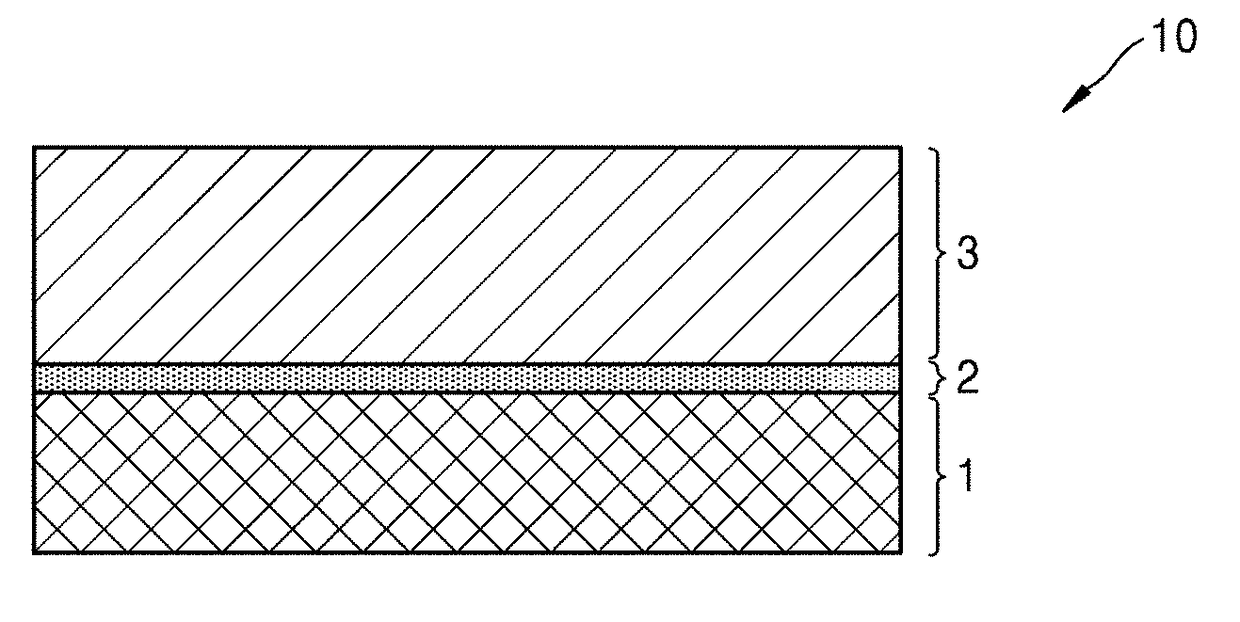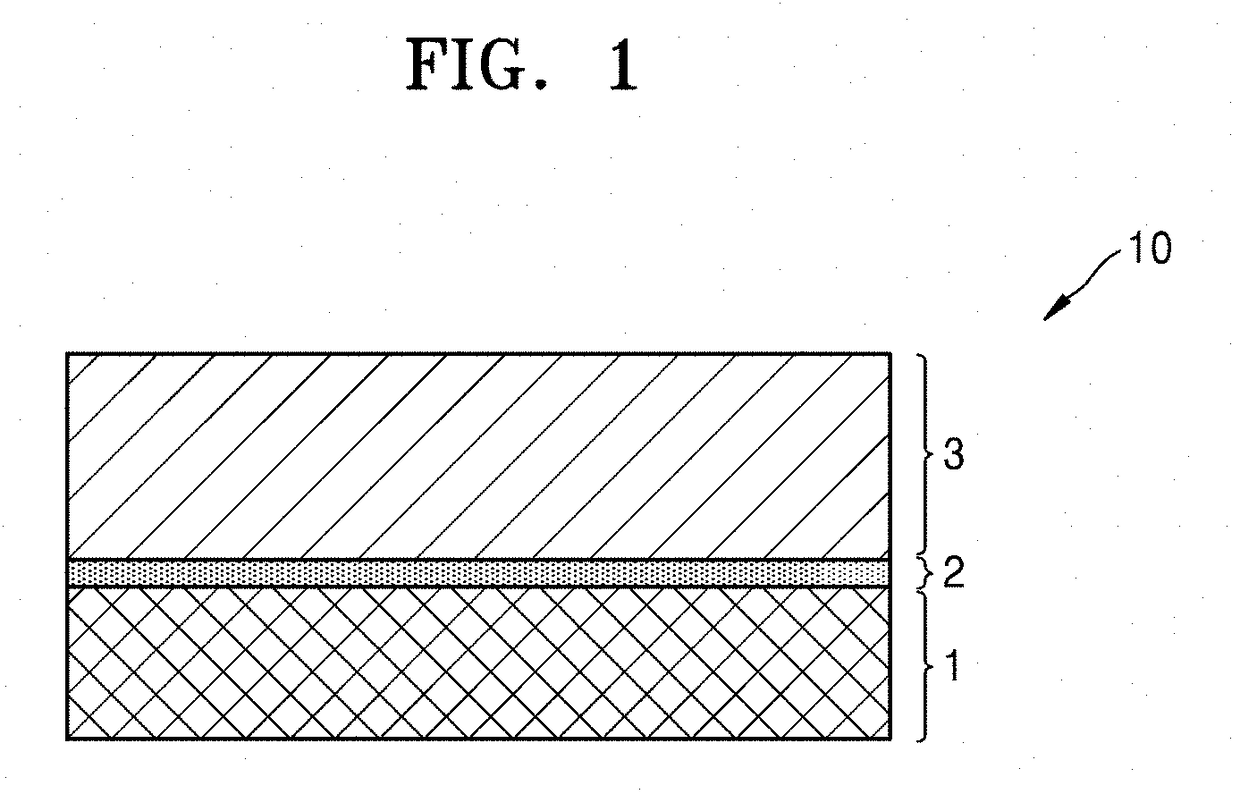Cathode active material, secondary battery comprising the same, and method of manufacturing the positive active material
a technology of cathode active material and secondary battery, which is applied in the direction of nickel compound, manganates/permanentanates, cell components, etc., can solve the problems of increased interface resistance between the positive active material and the coating material, specific capacity and active reaction surface area, and decrease of high rate charge and discharge characteristics, so as to improve the initial efficiency, capacity and lifespan characteristics
- Summary
- Abstract
- Description
- Claims
- Application Information
AI Technical Summary
Benefits of technology
Problems solved by technology
Method used
Image
Examples
example 4
on of Positive Active Material
[0191]100 parts by weight of the lithium metal oxide (LiNi0.6Co0.1Mn0.3O2) core obtained in Example 1, 0.04 parts by weight of 2,3-dihydroxynaphthalene (DN) as a carbonaceous precursor, and 0.5 parts by weight of acetone as a solvent were mixed, agitated, and then dried to obtain a mixture. The mixture was first heat treated in a N2 atmosphere at a temperature of 300° C. for 2 hours to perform a dehydration reaction between the core and 2,3-dihydroxynaphthalene, increased temperature to 500° C. and second heat treated at a temperature of 500° C. for 2 hours to prepare a positive active material that included the lithium metal oxide (LiNi0.6Co0.1Mn0.3O2) core and a non-conductive carbonaceous film containing oxygen formed thereon.
example 5
on of Positive Active Material
[0192]100 parts by weight of the lithium metal oxide (LiNi0.6Co0.1Mn0.3O2) core obtained in Example 1, 0.04 parts by weight of 2,3-dihydroxynaphthalene (DN) as a carbonaceous precursor, and 0.5 parts by weight of acetone as a solvent were mixed, agitated, and then dried to obtain a mixture. The mixture was first heat treated in a N2 atmosphere at a temperature of 300° C. for 2 hours to perform a dehydration reaction between the core and 2,3-dihydroxynaphthalene, increased temperature to 700° C., and second heat treated at a temperature of 700° C. for 2 hours to prepare a positive active material that included the lithium metal oxide (LiNi0.6Co0.1Mn0.3O2) core and a non-conductive carbonaceous film containing oxygen formed thereon.
example 6
on of Positive Active Material
[0193]100 parts by weight of the lithium metal oxide (LiNi0.6Co0.1Mn0.3O2) core obtained in Example 1, 0.04 parts by weight of 2,3-dihydroxynaphthalene (DN) as a carbonaceous precursor, and 0.5 parts by weight of acetone as a solvent were mixed, agitated, and then dried to obtain a mixture. The mixture was first heat treated in a N2 atmosphere at a temperature of 300° C. for 2 hours to perform a dehydration reaction between the core and 2,3-dihydroxynaphthalene, the temperature was increased to 800° C., and then the mixture was second heat treated at a temperature of 800° C. for 2 hours to prepare a positive active material that included the lithium metal oxide (LiNi0.6Co0.1Mn0.3O2) core and a non-conductive carbonaceous film containing oxygen formed thereon.
PUM
| Property | Measurement | Unit |
|---|---|---|
| binding energy | aaaaa | aaaaa |
| binding energy | aaaaa | aaaaa |
| voltage | aaaaa | aaaaa |
Abstract
Description
Claims
Application Information
 Login to View More
Login to View More - R&D Engineer
- R&D Manager
- IP Professional
- Industry Leading Data Capabilities
- Powerful AI technology
- Patent DNA Extraction
Browse by: Latest US Patents, China's latest patents, Technical Efficacy Thesaurus, Application Domain, Technology Topic, Popular Technical Reports.
© 2024 PatSnap. All rights reserved.Legal|Privacy policy|Modern Slavery Act Transparency Statement|Sitemap|About US| Contact US: help@patsnap.com










